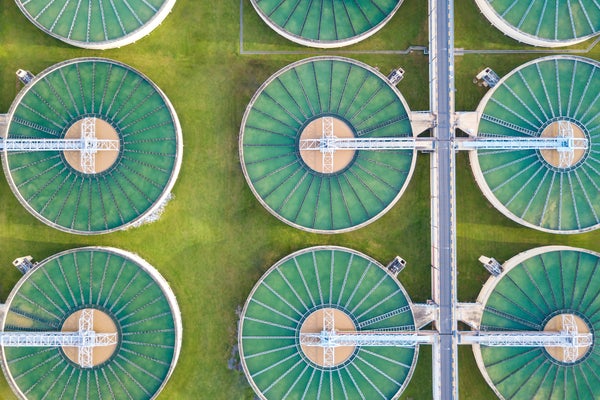This article was published in Scientific American’s former blog network and reflects the views of the author, not necessarily those of Scientific American
On September 10, 2019, at the 34th Annual WateReuse Symposium in San Diego, the Environmental Protection Agency (EPA) announced a draft National Water Reuse Action Plan for public comment—containing 46 proposed actions, to be accomplished by a mix of federal, state, private, local and private stakeholders, in order to promote 10 strategic objectives.
For many in the water sector, this was a welcome recognition—a validation, if you will, of a new movement and set of practices and technologies that will impact drinking water, energy, agriculture and industry throughout the nation. These all add up to something called “water reuse,”the discovery of “found water” in a community’s own waste stream converted into a valuable resource. Collectively, these new approaches deconstruct the very idea of “wastewater.” No longer is there such a thing. There is only water that is wasted.
A primer published by the American Water Works Association (AWWA) in 2016 provides some useful definitions. Water reuse “involves using water more than once to expand a community’s available water supply.” Nonpotable reuse relates to water that is not used for drinking but is safe to for such purposes as irrigation, including golf courses and lawns, or industrial processes. Potable reuse “refers to recycled or reclaimed water that is safe for drinking.” Indirect potable reuse “introduces purified water into an environmental buffer” (like a groundwater aquifer, reservoir or lake) “before the blended water is introduced into a water supply system.”
On supporting science journalism
If you're enjoying this article, consider supporting our award-winning journalism by subscribing. By purchasing a subscription you are helping to ensure the future of impactful stories about the discoveries and ideas shaping our world today.
Finally, direct potable reuse “introduces purified water directly into an existing water supply system.” This is the final frontier of water reuse and is just beginning to be contemplated in the United States.
Water reuse is local, sustainable, and cost-effective because wastewater is available even during drought conditions and causes less damage to the environment than other water-supply solutions like dams, reservoirs and canals.
According to Bluefield Research, current reuse capacity of reclaimed flows in the United States is expected to increase 37 percent by 2027. Industrial applications will grow 31 percent by the same year. The U.S. is already the largest reuse market by volume, with further future growth projected beyond that.
In addition to the EPA’s recent efforts, the development of water reuse has been a sustained, organic process of measured growth and evolution proceeding, for years, with due regard for human health and the environment. State regulators, utilities and private, standard-setting bodies, like AWWA, have been toiling in the vineyards, so to speak, for a long time. Consider the case of California’s Orange County Water District. It provides drinking water to 2.5 million people in a region with less than 15 inches of precipitation annually.
In 2018 the district celebrated the tenth anniversary of its Groundwater Replenishment System, the world’s largest potable reuse project. It takes treated wastewater that would otherwise flow to the sea and puts it through advanced purification utilizing microfiltration, reverse osmosis and ultraviolet light with hydrogen peroxide. Approximately one third of this water is injected into a seawater barrier along the coast, and the remainder is pumped to recharge basins 17 miles away. This is a new source of water supply for the groundwater basin and produces 100 million gallons per day or 30 percent of the basin’s supply.
Orange County Water District starts with treated wastewater and serves up purified water. It pumps this water into a groundwater basin, taking a year to move through sand, gravel and clay before consumption as drinking water. The advanced treated water is cleaner than the groundwater into which it is injected!
Back east in Virginia the Hampton Roads Sanitation District (HRSD), serving 1.7 million people over 3,087 square miles, established its Sustainable Water Initiative for Tomorrow (SWIFT) with the opening of the SWIFT Research Center. The center replenishes the Potomac Aquifer with one million gallons per day of effluent from the nearby treatment plant, adding advanced treatment (ozone biofiltration with granular activated carbon absorption) meeting Safe Drinking Water Act standards, not just ambient water quality standards under the Clean Water Act.
Ultimately, the research center will provide data to inform permitting and design of full-scale implementation at five facilities throughout the region. These new reuse-ready facilities will have a combined capacity in excess of 100 million gallons per day by 2030. And nutrient discharges to the Chesapeake Bay will be cut by approximately 90 percent below current requirements. Land subsidence, accounting for roughly 25 percent of net sea level rise, will also be reduced, even reversed in the region if modeling is correct.
But what of EPA’s new action plan? How does EPA reconcile its role as honest broker and regulator under the applicable environmental statutes with that of promoter of a given set of practices and technologies used by water and wastewater utilities as well as energy and industrial concerns? These are important questions which AWWA and other stakeholders will try to address during the public comment period. One troubling recommendation, among many good ones, is the establishment of goals for water reuse. This seems problematic given EPA’s role as protector of public health.
Maintaining EPA’s integrity is important for the long-term growth of potable reuse, especially direct potable reuse, if we are to retain the public’s confidence and faith in these promising new ways to find more water in our midst.
